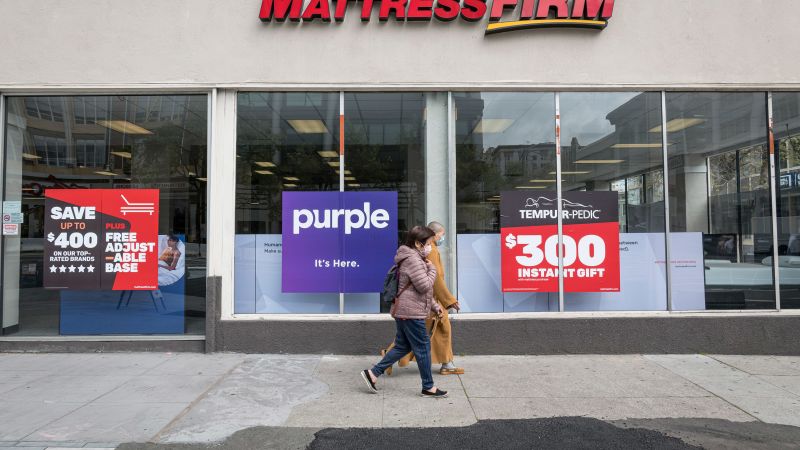Mattress maker Tempur Sealy has agreed to buy the nation’s largest bedding retailer Mattress Firm in a roughly $4 billion deal, the companies announced Tuesday.
The deal gives the combined company 3,000 stores and 71 manufacturing facilities and is expected to close in the second half of 2024.
Mattress and furniture sales have slowed following a pandemic-induced high when consumers splurged heavily on home furnishings. Persistent inflation also has impacted lower and middle-income shoppers, who have pulled back discretionary purchases to focus on paying for necessities like groceries, gas and rent.
Tempur Sealy is paying about $2.7 billion in cash and $1.3 billion in company stock to Mattress Firm shareholders. Mattress Firm will be operated as a separate business unit within the combined company. The companies forecast $100 million in cost savings four years after the deal closes.
Mattress Firm currently has about 2,300 stores and recently dealt with its own financial issues, including a 2018 bankruptcy. The retailer struggled with over-expansion and online competitors, including Casper and Amazon.
Last year, Mattress Firm’s parent company Steinhoff International said it was exploring “strategic options.” Earlier this year, plans for a public offering for Mattress Firm were scrapped.
Steinhoff has been looking to sell of the retailer in order to pay off debt, according to Neil Saunders, an analyst at GlobalData Retail. He added that the company is likely “relieved that they have found a buyer willing to pay a full price.”
“Acquiring Mattress Firm will allow Tempur Sealy to expand its distribution and showcase its brand to more consumers,” Saunders told CNN. “This comes at a time when some traditional sales channels, like department stores, are under pressure.”
Tempur Sealy’s portfolio includes Tempur-Pedic, Tempur, Sealy and Stearns and Foster. He noted that since Mattress Firms sells several other brands, it will be “interesting to see how Tempur Sealy intends to evolve the proposition and manage pushing its own brands against the interest of consumers in rivals’ products.”
Read the full article here
